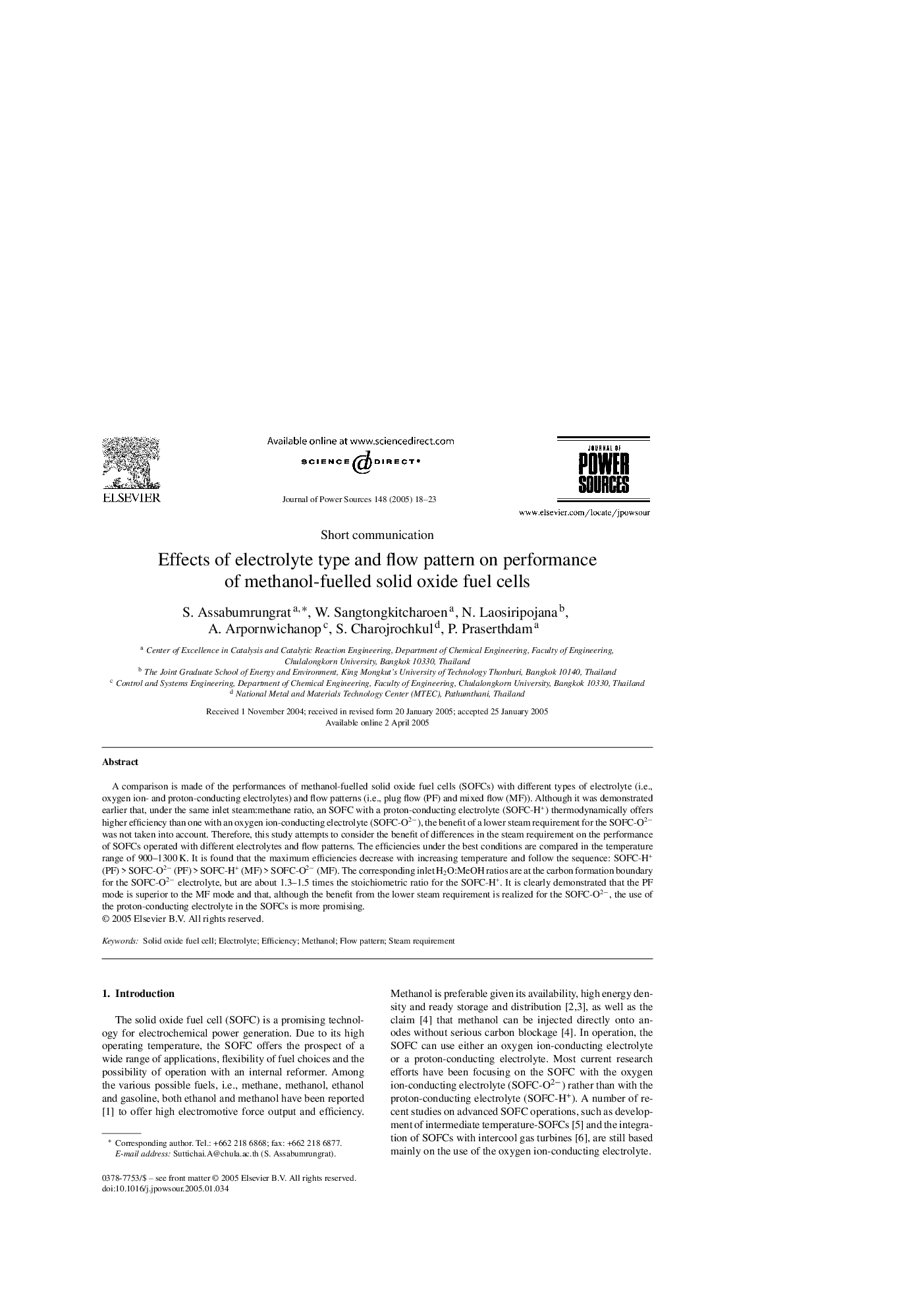| Article ID | Journal | Published Year | Pages | File Type |
|---|---|---|---|---|
| 9760218 | Journal of Power Sources | 2005 | 6 Pages |
Abstract
A comparison is made of the performances of methanol-fuelled solid oxide fuel cells (SOFCs) with different types of electrolyte (i.e., oxygen ion- and proton-conducting electrolytes) and flow patterns (i.e., plug flow (PF) and mixed flow (MF)). Although it was demonstrated earlier that, under the same inlet steam:methane ratio, an SOFC with a proton-conducting electrolyte (SOFC-H+) thermodynamically offers higher efficiency than one with an oxygen ion-conducting electrolyte (SOFC-O2â), the benefit of a lower steam requirement for the SOFC-O2â was not taken into account. Therefore, this study attempts to consider the benefit of differences in the steam requirement on the performance of SOFCs operated with different electrolytes and flow patterns. The efficiencies under the best conditions are compared in the temperature range of 900-1300Â K. It is found that the maximum efficiencies decrease with increasing temperature and follow the sequence: SOFC-H+ (PF)Â >Â SOFC-O2â (PF)Â >Â SOFC-H+ (MF)Â >Â SOFC-O2â (MF). The corresponding inlet H2O:MeOH ratios are at the carbon formation boundary for the SOFC-O2â electrolyte, but are about 1.3-1.5 times the stoichiometric ratio for the SOFC-H+. It is clearly demonstrated that the PF mode is superior to the MF mode and that, although the benefit from the lower steam requirement is realized for the SOFC-O2â, the use of the proton-conducting electrolyte in the SOFCs is more promising.
Related Topics
Physical Sciences and Engineering
Chemistry
Electrochemistry
Authors
S. Assabumrungrat, W. Sangtongkitcharoen, N. Laosiripojana, A. Arpornwichanop, S. Charojrochkul, P. Praserthdam,
